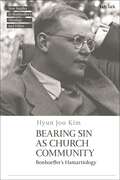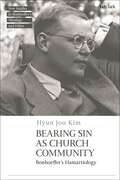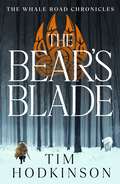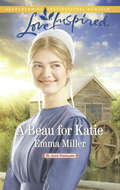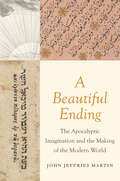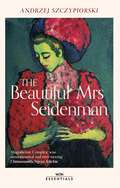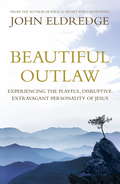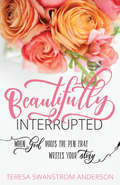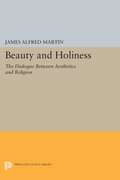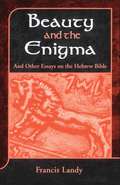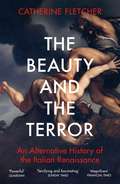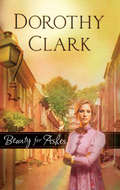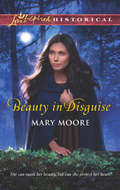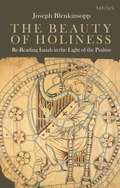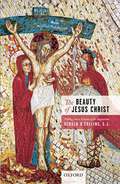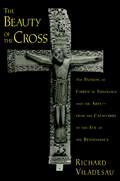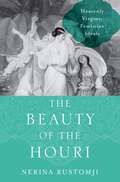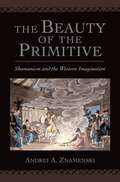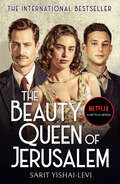- Table View
- List View
Bearing Sin as Church Community: Bonhoeffer's Hamartiology (T&T Clark New Studies in Bonhoeffer’s Theology and Ethics)
by Hyun Joo KimHyun Joo Kim claims that Bonhoeffer transforms and reconstructs the Augustinian doctrine of original sin by shifting the hamartiological premise from the doctrine of God to the doctrine of the church based on his Lutheran resources. In Bonhoeffer's view, Augustine's doctrine of original sin does not fully relate the doctrine of sin to the responsibility of the saints. In order to reform Augustinian hamartiology, Bonhoeffer appropriates Augustine's notion of the church as the whole Christ (totus Christus), which is located in Augustine's ecclesiology.Kim explicates how Augustine relates his epistemological premises in his Christianized Platonism to his formulation of the doctrine of original sin, and examines how Luther's Christocentric standpoint transforms Augustine's anthropology and ultimately leads Luther to his relational hamartiology. Kim contends that Bonhoeffer's later hamartiology and ethics contain the most distinctive characteristics of Bonhoeffer's doctrine of sin, in that he not only incorporates both the active and passive dimensions of sin, but also intensifies his continuing notion of “vicarious representative action” towards the church community.
Bearing Sin as Church Community: Bonhoeffer's Hamartiology (T&T Clark New Studies in Bonhoeffer’s Theology and Ethics)
by Hyun Joo KimHyun Joo Kim claims that Bonhoeffer transforms and reconstructs the Augustinian doctrine of original sin by shifting the hamartiological premise from the doctrine of God to the doctrine of the church based on his Lutheran resources. In Bonhoeffer's view, Augustine's doctrine of original sin does not fully relate the doctrine of sin to the responsibility of the saints. In order to reform Augustinian hamartiology, Bonhoeffer appropriates Augustine's notion of the church as the whole Christ (totus Christus), which is located in Augustine's ecclesiology.Kim explicates how Augustine relates his epistemological premises in his Christianized Platonism to his formulation of the doctrine of original sin, and examines how Luther's Christocentric standpoint transforms Augustine's anthropology and ultimately leads Luther to his relational hamartiology. Kim contends that Bonhoeffer's later hamartiology and ethics contain the most distinctive characteristics of Bonhoeffer's doctrine of sin, in that he not only incorporates both the active and passive dimensions of sin, but also intensifies his continuing notion of “vicarious representative action” towards the church community.
The Bear's Blade (The Whale Road Chronicles)
by Tim HodkinsonEinar must take back control of his destiny in this thrilling Viking adventure. How do you defeat the undefeatable? 935 AD, Norway. Recovering from horrendous injuries, Einar finds himself unable to fight. He is not strong enough to defeat his rival, Eirik, who has seized Orkney despite Einar being the rightful Jarl.Eirik's men soon raid the Norwegian coast, led by a warrior called the Bear. Cruel and ferocious, the Bear possesses a legendary blade – one that gives him a skill in battle that cannot be matched. Such an extraordinary sword could be key to Einar's plans – but first he and the Wolf Coats must contend with the Bear himself.Caught between old foes and new ones, Einar must use all his wits to survive. But is a man who cannot wield a sword capable of being a true Viking warrior?Reviews for Tim Hodkinson: 'Will appeal to fans of Bernard Cornwell, George R.R. Martin, and especially Theodore Brun' Historical Novel Society 'A gripping action adventure like the sagas of old' Melisende's Library 'An excellently written page-turner' Historical Writers Association
A Beau For Katie: A Beau For Katie (The Amish Matchmaker #3)
by Emma MillerThe Housekeeper's Surprise Match
A Beautiful Ending: The Apocalyptic Imagination and the Making of the Modern World
by John Jeffries MartinAn award-winning historian’s revisionary account of the early modern world, showing how apocalyptic ideas stimulated political, religious, and intellectual transformations “A masterful synthesis of the prognostications of faith, knowledge, and politics on a global stage. Martin’s book illuminates one of the enduring themes that shaped the medieval and early modern world.”—Paula E. Findlen, Stanford University In this revelatory immersion into the apocalyptic, messianic, and millenarian ideas and movements that created the modern world, John Jeffries Martin performs a kind of empathic time travel, entering into the psyche, spirituality, and temporalities of a cast of historical actors in profound moments of discovery. He argues that religious faith—Christian, Jewish, and Muslim—did not oppose but rather fostered the making of a modern scientific spirit, buoyed along by a providential view of history and nature, and a deep conviction in the coming End of the World. Through thoughtful attention to the primary sources, Martin re‑reads the Renaissance, excavating a religious foundation at the core of even the most radical empirical thinking. Familiar icons like Ibn Khaldūn, Columbus, Isaac Luria, and Francis Bacon emerge startlingly fresh and newly gleaned, agents of a history formerly untold and of a modern world made in the image of its imminent end.
The Beautiful Mrs Seidenman: With an introduction by Chimamanda Ngozi Adichie (W&N Essentials)
by Andrzej Szczypiorski'Magnificent. Complex, wise, unsentimental and very moving' Chimamanda Ngozi Adichie'Dense, lyrical and deeply unsettling' New York Times'A fine balance between poetic tenderness and an unflinching account of the brutal realities of the day' Guardian'Extraordinarily original' Los Angeles Times'The prose is stunning, thanks to a masterful translation by Klara Glowczewska, and the characters are so fully fleshed that they seem to step off the page' NPR'Grips the reader with the power of a high-class thriller' Frankfurter Rundschau 'All at once she thought that a life is only that which has passed. There is no life other than memory' In the Nazi-occupied Warsaw of 1943, Irma Seidenman, a young Jewish widow, possesses two attributes that can spell the difference between life and death: blue eyes and blond hair. Paired with false papers, she passes as the wife of a Polish officer, until one day an informer spots her on the street.At times a dark lament, at others a sly and sardonic thriller, The Beautiful Mrs. Seidenman is the story of the thirty-six hours that follow Irma's arrest and the events that lead to her dramatic rescue.
Beautiful Outlaw: Experiencing the Playful, Disruptive, Extravagant Personality of Jesus
by John EldredgeJesus is the most vague, misrepresented figure in the history of the world. Is it possible to know and trust someone so ethereal and lofty? What is he really like? BEAUTIFUL OUTLAW offers a look into the humanity of Jesus, dismantling all the religious nonsense and helping us understand who this man really was - on a personal level. Focusing on his compelling personality, bestselling author John Eldredge shows us the real Jesus - playful, wild, and often scandalous.
Beautifully Broken: An Unlikely Journey of Faith
by Paige Wetzel Josh WetzelRestore your faith in love and family with one Army wife's courageous story of how she helped her husband recuperate from losing both of his legs while serving in Afghanistan.Paige received the phone call that every military wife prays will never come. Her husband, Army Sergeant Josh Wetzel, stepped on an improvised explosive device while patrolling in Afghanistan. The blast resulted in the immediate loss of his legs. His survival was uncertain, and in the days to come, this traumatic incident began an unbelievable journey of faith for them as a couple. Paige's vulnerability as she struggles physically, emotionally, and spiritually, will remind you of the power of commitment and love in the face of adversity. You will discover the bravery and grit of a woman who stood behind the battle lines but faced a battle of her own to save her marriage and her family. As a military wife, Paige had to come to terms with the priorities of the military: God, Country, and then Family.
Beautifully Interrupted: When God Holds the Pen that Writes Your Story
by Teresa Swanstrom AndersonForeword by Mandy Arioto, President of MOPS InternationalTeresa Swanstrom Anderson is living the life she thought she never wanted. With an art history degree and dreams of living in Europe as a curator, Teresa had big plans for herself. She had no desire to have kids -- didn't even like them -- but after a decision to lay her exciting plans at the feet of Christ, God began changing her heart little by little. While dating the man who eventually became her husband, the two felt called to adopt from Africa. Now, Teresa's house is bursting at the seams with the loves of her life -- her husband, Ben, and their six children, four of whom were born in Ethiopia. She believes in celebrating the everyday and instilling the love of God and others in her children's hearts. She views her life as a series of redirected dreams, stumbling, falling, getting up, and wondering if she is investing her time where it matters most. Through it all, Teresa grasps joy tightly amid the craziness of everyday life. Go from dreaming about your life to living it fully with God in control. Pick up this book, grab a notebook, curl up on the couch, and open your heart to the potential of allowing your life to become beautifully interrupted. Includes reflection questions and Bible study prompts. Have you gotten so caught up in life and your well-intentioned plans that you may have accidentally planned God right out of it all? Teresa Swanstrom Anderson did just that. Her carefully laid out life changed course when she whispered to God, "Send me. Use me." Be inspired as you read Beautifully Interrupted and learn the importance of giving your plans back to God and allow Him to expand the borders of your life and heart. This book offers strategies and encouragement for living through the in-between times of waiting, as well as facing trials with grace and active faith. Become equipped to brave the storms and embrace the life-changing power of seeking God's plan first and sacrificing time and set plans in favor of something far greater.
Beauty and Holiness: The Dialogue Between Aesthetics and Religion (PDF)
by James Alfred MartinIn this broad historical and critical overview based on a lifetime of scholarship, James Alfred Martin, Jr., examines the development of the concepts of beauty and holiness as employed in theories of aesthetics and of religion. The injunction in the Book of Psalms to "worship the Lord in the beauty of holiness" addressed a tradition that has comprehended holiness primarily in terms of ethical righteousness--a conception that has strongly influenced Western understandings of religion. As the author points out, however, the Greek forbears of Western thought, as well as many Eastern traditions, were and are more broadly concerned with the pursuit of beauty, truth, and goodness as ideals of human excellence, that is, with the "holiness of beauty." In this work Martin describes a philosophical stance that should prove to be most productive for the dialogue between aesthetics and religion.Beginning with the treatment of beauty and holiness in Hebrew, Greek, and classical Christian thought, the author traces the emergence of modern theories of aesthetics and religion in the Enlightenment. He then outlines the role of aesthetics in the theories of religion proposed by Otto, Eliade, van der Leeuw, and Tillich, in the cultural anthropology of Geertz, and in the thought of Santayana, Dewey, Whitehead, Heidegger, and Wittgenstein. In a global context Martin explores the relation of aesthetic theory to religious thought in the traditions of India, China, and Japan and concludes with reflections on the viability of modern aesthetic and religious theory in the light of contemporary cultural and methodological pluralism.Originally published in 1990.The Princeton Legacy Library uses the latest print-on-demand technology to again make available previously out-of-print books from the distinguished backlist of Princeton University Press. These editions preserve the original texts of these important books while presenting them in durable paperback and hardcover editions. The goal of the Princeton Legacy Library is to vastly increase access to the rich scholarly heritage found in the thousands of books published by Princeton University Press since its founding in 1905.
Beauty and the Enigma: And Other Essays on the Hebrew Bible (The Library of Hebrew Bible/Old Testament Studies)
by Francis LandyThis book is a collection of Landy's studies on the poetics of the Hebrew Bible. The Song of Songs is featured alongside the prophetic voices of Amos, Hosea and Isaiah, and essays on the Binding of Isaac and on the book of Ruth. Throughout, the emphasis throughout is on the subversiveness, richness and ambiguity of the text, but above all its (often enigmatic) beauty. The thread of psychoanalysis and its metaphorical technique draws together this collection from one of the Bible's most sensitive and distinctive literary critics.
The Beauty and the Terror: An Alternative History of the Italian Renaissance
by Catherine FletcherThe Italian Renaissance shaped Western culture - but it was far stranger and darker than many of us realise.'Brilliant and gripping, here is the full true Renaissance in a history of compelling originality and freshness' Simon Sebag MontefioreWe know the Mona Lisa for her smile, but not that she was married to a slave-trader. We revere Leonardo da Vinci for his art, but few now appreciate his ingenious designs for weaponry. We visit Florence to see Michelangelo's David, but hear nothing of the massacre that forced the republic's surrender. In fact, many of the Renaissance's most celebrated artists and thinkers emerged not during the celebrated 'rebirth' of the fifteenth century but amidst the death and destruction of the sixteenth century.The Beauty and the Terror is an enrapturing narrative which includes the forgotten women writers, Jewish merchants, mercenaries, prostitutes, farmers and citizens who lived the Renaissance every day. Brimming with life, it takes us closer than ever before to the reality of this astonishing era, and its meaning for today.'Terrifying and fascinating' Sunday Times'Enlightening...exactly the alternative history you might wish for' Daily Telegraph
Beauty for Ashes (Mills And Boon Silhouette Ser.)
by Dorothy ClarkIn the prim-and-proper Philadelphia of 1820, a shocking marriage…
Beauty in Disguise (Mills And Boon Love Inspired Historical Ser.)
by Mary MooreHIDDEN IN PLAIN SIGHT After her scandalous first Season, Lady Kathryn needs a new beginning. Concealing her stunning hair and sapphire eyes beneath a dowdy façade, she’s grateful to earn her keep as companion Kate Montgomery. Until she comes face to face with her past in Lord Dalton, the only man she has ever loved.
The Beauty of Holiness: Re-Reading Isaiah in the Light of the Psalms
by Joseph BlenkinsoppJoseph Blenkinsopp presents an intertextual reading of Isaiah and the Psalms furthering his previous well-known work on the text of Isaiah. Blenkinsopp argues that, read together, these two biblical books can be shown to form a single religious vision, a way of experiencing and articulating a commitment to the fundamentals of the faith of Israel, with its own distinctive character. Blenkinsopp shows how the emphasis in Isaiah and the Psalms is on affect and emotion, the expression of joy and sorrow articulated in music, singing, and dancing; in praise, thanksgiving and lament. This represents a key difference from other parts of the Hebrew Bible where the focus is more on the Law and on the covenant at Sinai – in Isaiah and the Psalms these terms rarely occur, the focus is instead on Zion and on the Temple. Blenkinsopp shows how the temple singers, with their close connections with the circles which transmitted and eventually committed to writing the Book of Isaiah, demonstrate that the divine word is not incompatible with other forms of religious experience and expression, affective and even mystical, articulated and embodied in the performance of music, song, ritual prayer, and dance. The beauty of the Psalms is echoed strongly in Isaiah, and the Isaian vision of a Creator God, Lord of nature and history beyond the bounds of Israel, is joyfully proclaimed by the psalmists.
The Beauty of Holiness: Re-Reading Isaiah in the Light of the Psalms
by Joseph BlenkinsoppJoseph Blenkinsopp presents an intertextual reading of Isaiah and the Psalms furthering his previous well-known work on the text of Isaiah. Blenkinsopp argues that, read together, these two biblical books can be shown to form a single religious vision, a way of experiencing and articulating a commitment to the fundamentals of the faith of Israel, with its own distinctive character. Blenkinsopp shows how the emphasis in Isaiah and the Psalms is on affect and emotion, the expression of joy and sorrow articulated in music, singing, and dancing; in praise, thanksgiving and lament. This represents a key difference from other parts of the Hebrew Bible where the focus is more on the Law and on the covenant at Sinai – in Isaiah and the Psalms these terms rarely occur, the focus is instead on Zion and on the Temple. Blenkinsopp shows how the temple singers, with their close connections with the circles which transmitted and eventually committed to writing the Book of Isaiah, demonstrate that the divine word is not incompatible with other forms of religious experience and expression, affective and even mystical, articulated and embodied in the performance of music, song, ritual prayer, and dance. The beauty of the Psalms is echoed strongly in Isaiah, and the Isaian vision of a Creator God, Lord of nature and history beyond the bounds of Israel, is joyfully proclaimed by the psalmists.
The Beauty of Jesus Christ: Filling out a Scheme of St Augustine
by Gerald O'Collins, S.J.This book anchors its account of the beauty of Jesus Christ to a scheme found in St Augustine of Hippo's Expositions of the Psalms. There Augustine recognized the beauty of Christ at every stage-from his pre-existence ('beautiful in heaven'), through his incarnation, the public ministry ('beautiful in his miracles, beautiful in calling to life'), passion, crucifixion, burial, resurrection ('beautiful in taking up his life again'), and glorious life 'in heaven'. Augustine never filled out this laconic summary by writing a work on Christ and his beauty. The Beauty of Jesus Christ seems to be the first attempt in Christian history to write a comprehensive account of the beauty of Christ in the light of Augustine's list. The work begins by offering a working description of what it understands by beauty as being perfect, harmonious, and radiant. Beauty, above all the divine beauty, enjoys inexhaustible meaning and overlaps with 'the holy' or the awesome and fascinating mystery of God. Loving beauty opens the way to truth and helps us grasp and practise virtue. The books needs to add some items to Augustine's list by recognizing Christ's beauty in his baptism, transfiguration, and post-resurrection sending of the Holy Spirit. It also goes beyond Augustine by showing how the imagery and language Jesus prepared in his hidden life and then used in his ministry witness to the beautiful sensibility that developed during his years at home in Nazareth. Throughout, this book draws on the Scriptures to illustrate and justify Augustine's brief claims about the beauty revealed in the whole story of Christ, from his pre-existence to his risen 'post-existence'. Where appropriate, it also cites the witness to Christ's beauty that has come from artists, composers of sacred music, the creators of icons, and writers.
The Beauty of Jesus Christ: Filling out a Scheme of St Augustine
by Gerald O'Collins, S.J.This book anchors its account of the beauty of Jesus Christ to a scheme found in St Augustine of Hippo's Expositions of the Psalms. There Augustine recognized the beauty of Christ at every stage-from his pre-existence ('beautiful in heaven'), through his incarnation, the public ministry ('beautiful in his miracles, beautiful in calling to life'), passion, crucifixion, burial, resurrection ('beautiful in taking up his life again'), and glorious life 'in heaven'. Augustine never filled out this laconic summary by writing a work on Christ and his beauty. The Beauty of Jesus Christ seems to be the first attempt in Christian history to write a comprehensive account of the beauty of Christ in the light of Augustine's list. The work begins by offering a working description of what it understands by beauty as being perfect, harmonious, and radiant. Beauty, above all the divine beauty, enjoys inexhaustible meaning and overlaps with 'the holy' or the awesome and fascinating mystery of God. Loving beauty opens the way to truth and helps us grasp and practise virtue. The books needs to add some items to Augustine's list by recognizing Christ's beauty in his baptism, transfiguration, and post-resurrection sending of the Holy Spirit. It also goes beyond Augustine by showing how the imagery and language Jesus prepared in his hidden life and then used in his ministry witness to the beautiful sensibility that developed during his years at home in Nazareth. Throughout, this book draws on the Scriptures to illustrate and justify Augustine's brief claims about the beauty revealed in the whole story of Christ, from his pre-existence to his risen 'post-existence'. Where appropriate, it also cites the witness to Christ's beauty that has come from artists, composers of sacred music, the creators of icons, and writers.
The Beauty of the Cross: The Passion of Christ in Theology and the Arts from the Catacombs to the Eve of the Renaissance
by Richard ViladesauFrom the earliest period of its existence, Christianity has been recognized as the "religion of the cross." Some of the great monuments of Western art are representations of the brutal torture and execution of Christ. Despite the horror of crucifixion, we often find such images beautiful. The beauty of the cross expresses the central paradox of Christian faith: the cross of Christ's execution is the symbol of God's victory over death and sin. The cross as an aesthetic object and as a means of devotion corresponds to the mystery of God's wisdom and power manifest in suffering and apparent failure. In this volume, Richard Viladesau seeks to understand the beauty of the cross as it developed in both theology and art from their beginnings until the eve of the renaissance. He argues that art and symbolism functioned as an alternative strand of theological expression -- sometimes parallel to, sometimes interwoven with, and sometimes in tension with formal theological reflection on the meaning of the Crucifixion and its role insalvation history. Using specific works of art to epitomize particular artistic and theological paradigms, Viladesau then explores the contours of each paradigm through the works of representative theologians as well as liturgical, poetic, artistic, and musical sources. The beauty of the cross is examined from Patristic theology and the earliest representations of the Logos on the cross, to the monastic theology of victory and the Romanesque crucified "majesty," to the Anselmian "revolution" that centered theological and artistic attention on the suffering humanity of Jesus, and finally to the breakdown of the high scholastic theology of the redemption in empirically concentrated nominalism and the beginnings of naturalism in art. By examining the relationship between aesthetic and conceptual theology, Viladesau deepens our understanding of the foremost symbol of Christianity. This volume makes an important contribution to an emerging field, breaking new ground in theological aesthetics. The Beauty of the Cross is a valuable resource for scholars, students, and anyone interested in the passion of Christ and its representation.
The Beauty of the Cross: The Passion of Christ in Theology and the Arts from the Catacombs to the Eve of the Renaissance
by Richard ViladesauFrom the earliest period of its existence, Christianity has been recognized as the "religion of the cross." Some of the great monuments of Western art are representations of the brutal torture and execution of Christ. Despite the horror of crucifixion, we often find such images beautiful. The beauty of the cross expresses the central paradox of Christian faith: the cross of Christ's execution is the symbol of God's victory over death and sin. The cross as an aesthetic object and as a means of devotion corresponds to the mystery of God's wisdom and power manifest in suffering and apparent failure. In this volume, Richard Viladesau seeks to understand the beauty of the cross as it developed in both theology and art from their beginnings until the eve of the renaissance. He argues that art and symbolism functioned as an alternative strand of theological expression -- sometimes parallel to, sometimes interwoven with, and sometimes in tension with formal theological reflection on the meaning of the Crucifixion and its role insalvation history. Using specific works of art to epitomize particular artistic and theological paradigms, Viladesau then explores the contours of each paradigm through the works of representative theologians as well as liturgical, poetic, artistic, and musical sources. The beauty of the cross is examined from Patristic theology and the earliest representations of the Logos on the cross, to the monastic theology of victory and the Romanesque crucified "majesty," to the Anselmian "revolution" that centered theological and artistic attention on the suffering humanity of Jesus, and finally to the breakdown of the high scholastic theology of the redemption in empirically concentrated nominalism and the beginnings of naturalism in art. By examining the relationship between aesthetic and conceptual theology, Viladesau deepens our understanding of the foremost symbol of Christianity. This volume makes an important contribution to an emerging field, breaking new ground in theological aesthetics. The Beauty of the Cross is a valuable resource for scholars, students, and anyone interested in the passion of Christ and its representation.
The Beauty of the Houri: Heavenly Virgins, Feminine Ideals
by Nerina RustomjiA captivating look at the history of the pure females of Islamic paradise known as the houri The fascination with the houri, the pure female of Islamic paradise, began long before September 11, 2001. Beauty of the Houri: Heavenly Virgins, Feminine Ideals demonstrates how the ambiguous reward of the houri, mentioned in the Qur)qan and developed in Islamic theological writings, has gained a distinctive place in the cultural eye from the seventeenth to the twenty-first century. The houri had multiple functions in Islamic texts that ranged from caretaker, to pure companion, to personal entertainment. French, English, and American writers used the houri to critique Islam and Muslim societies, while also adopting the houri as a model of feminine beauty. Unlike earlier texts that presented different forms of the houri or universalized the houri for all women, writings about the houri after September 11th offer contradictory messages about Islam. In the twenty-first century, the image of the houri has come to symbolize a reward for violence and the possibility of gender parity. As a cosmic figure that inspires enduring questions about the promise of paradise and the idealized feminine form, the houri has a singular past and broad potential for future interpretation. The Beauty of the Houri narrates an intellectual history of the houri and offers a contemporary account of how theological ambiguity has led to different interpretations of this powerfully enduring Islamic concept.
The Beauty of the Houri: Heavenly Virgins, Feminine Ideals
by Nerina RustomjiA captivating look at the history of the pure females of Islamic paradise known as the houri The fascination with the houri, the pure female of Islamic paradise, began long before September 11, 2001. Beauty of the Houri: Heavenly Virgins, Feminine Ideals demonstrates how the ambiguous reward of the houri, mentioned in the Qur)qan and developed in Islamic theological writings, has gained a distinctive place in the cultural eye from the seventeenth to the twenty-first century. The houri had multiple functions in Islamic texts that ranged from caretaker, to pure companion, to personal entertainment. French, English, and American writers used the houri to critique Islam and Muslim societies, while also adopting the houri as a model of feminine beauty. Unlike earlier texts that presented different forms of the houri or universalized the houri for all women, writings about the houri after September 11th offer contradictory messages about Islam. In the twenty-first century, the image of the houri has come to symbolize a reward for violence and the possibility of gender parity. As a cosmic figure that inspires enduring questions about the promise of paradise and the idealized feminine form, the houri has a singular past and broad potential for future interpretation. The Beauty of the Houri narrates an intellectual history of the houri and offers a contemporary account of how theological ambiguity has led to different interpretations of this powerfully enduring Islamic concept.
The Beauty of the Primitive: Shamanism and Western Imagination
by Andrei A. ZnamenskiFor the past forty years shamanism has drawn increasing attention among the general public and academics. There is an enormous literature on shamanism, but no one has tried to understand why and how Western intellectual and popular culture became so fascinated with the topic. Behind fictional and non-fictional works on shamanism, Andrei A. Znamenski uncovers an exciting story that mirrors changing Western attitudes toward the primitive. The Beauty of the Primitive explores how shamanism, an obscure word introduced by the eighteenth-century German explorers of Siberia, entered Western humanities and social sciences, and has now become a powerful idiom used by nature and pagan communities to situate their spiritual quests and anti-modernity sentiments. The major characters of The Beauty of the Primitive are past and present Western scholars, writers, explorers, and spiritual seekers with a variety of views on shamanism. Moving from Enlightenment and Romantic writers and Russian exile ethnographers to the anthropology of Franz Boas to Mircea Eliade and Carlos Castaneda, Znamenski details how the shamanism idiom was gradually transplanted from Siberia to the Native American scene and beyond. He also looks into the circumstances that prompted scholars and writers at first to marginalize shamanism as a mental disorder and then to recast it as high spiritual wisdom in the 1960s and the 1970s. Linking the growing interest in shamanism to the rise of anti-modernism in Western culture and intellectual life, Znamenski examines the role that anthropology, psychology, environmentalism, and Native Americana have played in the emergence of neo-shamanism. He discusses the sources that inspire Western neo-shamans and seeks to explain why lately many of these spiritual seekers have increasingly moved away from non-Western tradition to European folklore. A work of intellectual discovery, The Beauty of the Primitive shows how scholars, writers, and spiritual seekers shape their writings and experiences to suit contemporary cultural, ideological, and spiritual needs. With its interdisciplinary approach and engaging style, it promises to be the definitive account of this neglected strand of intellectual history.
The Beauty of the Primitive: Shamanism and Western Imagination
by Andrei A. ZnamenskiFor the past forty years shamanism has drawn increasing attention among the general public and academics. There is an enormous literature on shamanism, but no one has tried to understand why and how Western intellectual and popular culture became so fascinated with the topic. Behind fictional and non-fictional works on shamanism, Andrei A. Znamenski uncovers an exciting story that mirrors changing Western attitudes toward the primitive. The Beauty of the Primitive explores how shamanism, an obscure word introduced by the eighteenth-century German explorers of Siberia, entered Western humanities and social sciences, and has now become a powerful idiom used by nature and pagan communities to situate their spiritual quests and anti-modernity sentiments. The major characters of The Beauty of the Primitive are past and present Western scholars, writers, explorers, and spiritual seekers with a variety of views on shamanism. Moving from Enlightenment and Romantic writers and Russian exile ethnographers to the anthropology of Franz Boas to Mircea Eliade and Carlos Castaneda, Znamenski details how the shamanism idiom was gradually transplanted from Siberia to the Native American scene and beyond. He also looks into the circumstances that prompted scholars and writers at first to marginalize shamanism as a mental disorder and then to recast it as high spiritual wisdom in the 1960s and the 1970s. Linking the growing interest in shamanism to the rise of anti-modernism in Western culture and intellectual life, Znamenski examines the role that anthropology, psychology, environmentalism, and Native Americana have played in the emergence of neo-shamanism. He discusses the sources that inspire Western neo-shamans and seeks to explain why lately many of these spiritual seekers have increasingly moved away from non-Western tradition to European folklore. A work of intellectual discovery, The Beauty of the Primitive shows how scholars, writers, and spiritual seekers shape their writings and experiences to suit contemporary cultural, ideological, and spiritual needs. With its interdisciplinary approach and engaging style, it promises to be the definitive account of this neglected strand of intellectual history.
The Beauty Queen of Jerusalem: A Novel
by Sarit Yishai-LeviA No. 1 international bestseller, The Beauty Queen of Jerusalem is a dazzling novel of mothers and daughters, stories told and untold, and the ties that bind four generations of women. Gabriela's mother Luna is the most beautiful woman in all of Jerusalem, though her famed beauty and charm seem to be reserved for everyone but her daughter. Ever since Gabriela can remember, she and Luna have struggled to connect. But when tragedy strikes, Gabriela senses there's more to her mother than painted nails and lips. Desperate to understand their relationship, Gabriela pieces together the stories of her family's previous generations – from Great-Grandmother Mercada the renowned healer, to Grandma Rosa who cleaned houses for the English, to Luna who had the nicest legs in Jerusalem. But Gabriela must face a past and present far more complex than she ever imagined. Spanning decades, The Beauty Queen of Jerusalem follows generations of unforgettable women as they forge their own paths through times of dramatic change, and paints a dazzling portrait of a family and a young nation as they struggle to find their way even as others try to carve it out for them.
